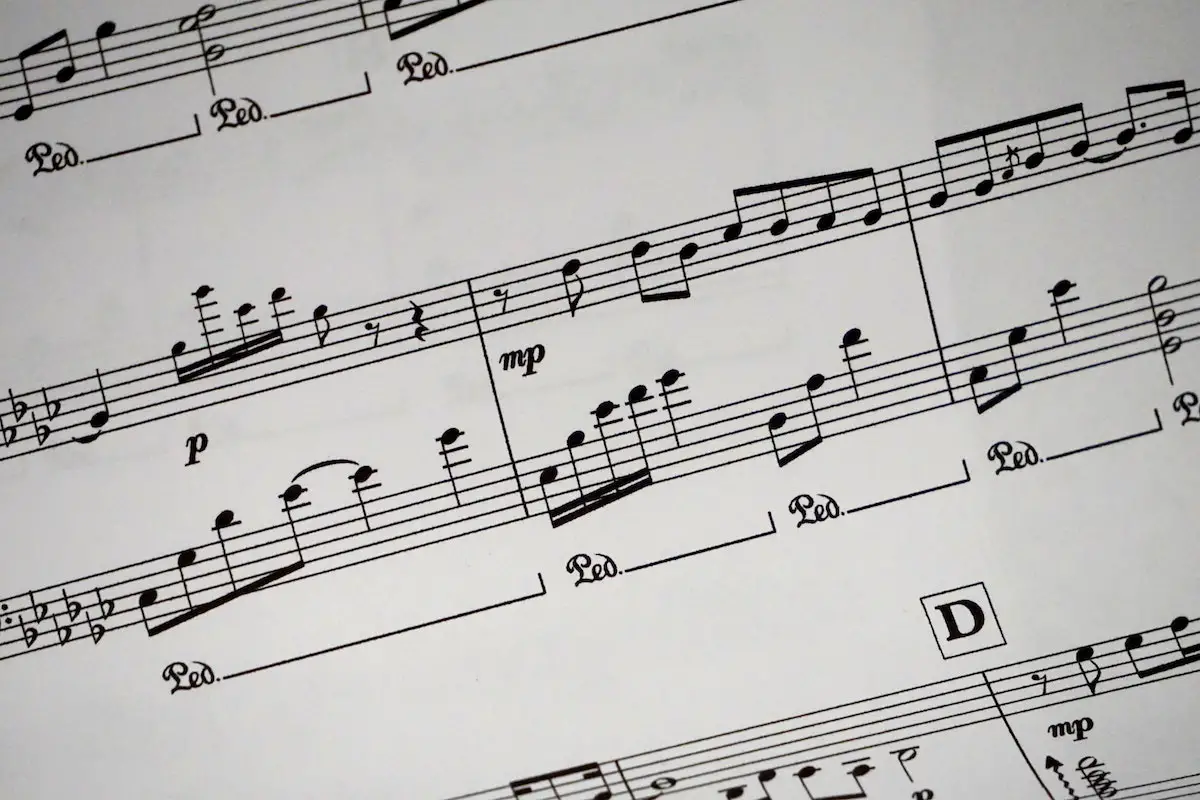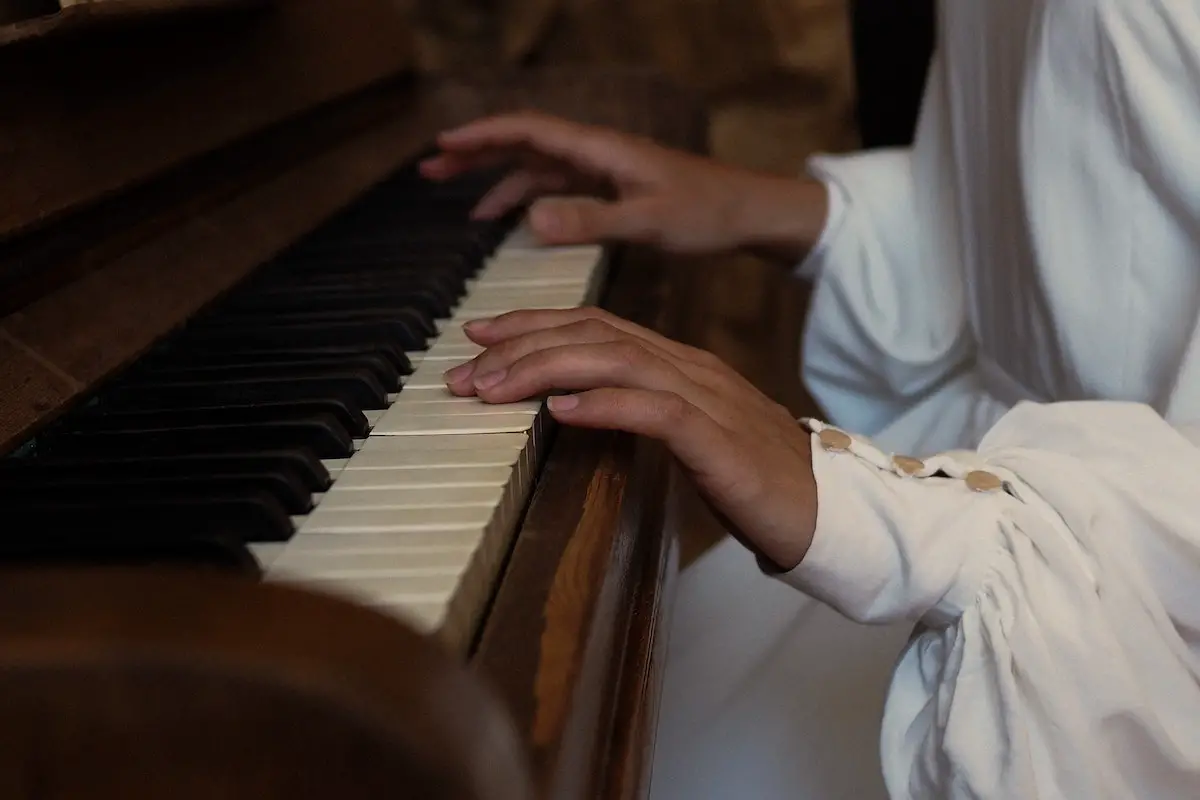In music notation, every symbol and term guides the performer on how to breathe life into compositions. Among these, dynamic markings dictate the ebb and flow of volume, pulling listeners into an emotional journey. Enter “mezzo-piano“—a term that, at first glance, might seem enigmatic. Rooted in Italian, this phrase paints a specific sonic picture. But what does it signify, and why is it so vital in the realm of musical expression?
What does mezzo-piano mean? Simply put, “mezzo-piano” means playing somewhat softly, a touch louder than “piano.” It’s the perfect balance between gentle whispers and delicate power.
What are dynamics in music?
Dynamics in music refer to the variations in loudness or intensity of a musical composition. They play a crucial role in shaping a piece of music’s emotional and expressive qualities. Dynamics are typically indicated by specific markings in the sheet music, often using Italian terms. These markings tell the performer how loud or soft to play a particular music section.

AKAI Professional MPK Mini MK3

AKAI Professional MPK Mini MK3
What does mezzo-piano mean?
Before fully grasping the mezzo-piano, we must understand its counterpart: mezzo-forte. “Mezzo” means “medium” in Italian, so when we talk about mezzo-forte, we’re referring to playing at a medium loudness. Think of it as an average volume—neither soft nor loud. In sheet music, it’s notated as “mf.”
Mezzo-piano asks for a softer touch than mezzo-forte but louder than piano. It’s like a delicate dance between tranquility and expression, where the notes softly embrace the listener’s ears. Dynamics in music are not merely black and white. They provide a spectrum of expression, and mezzo-piano adds a touch of elegance to the mix. In these subtle gradations, musicians can truly shine, adding layers of emotion and artistry to their performances.
How can you master the art of mezzo-piano?
It starts with a delicate touch and a keen sense of balance. Experiment with different nuances, paying attention to the subtleties of volume and expression. Embrace the magic of mezzo-piano as you bring your music to life, painting vibrant musical landscapes that captivate the hearts of your listeners.
To help you navigate the world of mezzo-piano dynamics, here’s a handy table of dos and don’ts:
| Dos | Don’ts |
|---|---|
| Express subtlety | Rush through |
| Create gentle swells | Overplay |
| Embrace nuance | Neglect dynamics |
| Capture delicate emotions | Play mechanically |
What are the other dynamics in music?
When you open a piece of sheet music, you’ll encounter a range of dynamic markings. Let’s take a closer look at how these markings are represented:
- Fortissimo (ff): Represented by double “f” symbols, fortissimo signifies a very loud passage. Prepare to unleash your full musical strength!
- Forte (f): Notated with a single “f,” forte indicates a loud and strong passage. It’s a call to make a powerful musical statement.
- Mezzo-Forte (mf): Combining the Italian words for “medium” and “strong,” mezzo-forte signifies a medium loudness. It’s like speaking confidently, capturing attention without overwhelming it.
- Mezzo-Piano (mp): As we explored earlier, mezzo-piano refers to a medium softness. It’s the delicate balance between whispers and gentle warmth.
- Piano (p): Represented by a single “p,” piano marks a soft passage. It’s a moment of tranquility where the music embraces subtlety and tenderness.
- Pianissimo (pp): Notated with double “p” symbols, pianissimo takes softness to an even more delicate level. It’s like a gentle caress of sound, inviting listeners to lean in and immerse themselves in the musical whispers.
How can you apply dynamics to expressiveness in music?
Now that we’ve demystified the dynamic notations, how can you apply them to expressiveness in music? Here are some key aspects to consider:

- Contrasting Dynamics: Explore the interplay between contrasting dynamic levels to create dramatic effects in your music. Pairing soft and loud passages can evoke strong emotional responses from listeners.
- Dynamic Shaping: Shape your phrases by gradually increasing or decreasing the volume within a dynamic marking. This technique, known as dynamic shaping, adds depth and nuance to your performances.
- Dynamic Variation: Experiment with dynamic variation within a passage. Play with subtle fluctuations in volume, emphasizing certain notes or phrases to highlight the musical narrative.
- Musical Context: Consider the context of the piece and the emotions it seeks to convey. Adapt your dynamic choices to serve the musical storyline, enhancing the overall impact and resonance of the composition.
If you want even more great tips and information, check out the video below.
Frequently Asked Questions (FAQ)
As we dive into the world of mezzo-piano, you might have a few burning questions. Let’s address some common inquiries to further deepen our understanding:
Can mezzo piano be applied to all genres of music?
Yes, absolutely! Mezzo piano dynamics can be utilized in various genres, including classical, jazz, pop, and more. Its versatility allows musicians and producers to evoke subtle emotions and add depth to their compositions across different musical styles.
How do I effectively capture mezzo-piano dynamics in my home recording studio?
To capture mezzo-piano dynamics in your home recording studio, it’s crucial to pay attention to microphone placement, use appropriate gain staging, and ensure a quiet recording environment. Experiment with different techniques and listen attentively to capture the delicate nuances of mezzo-piano in your recordings.
Can mezzo-piano dynamics be achieved with virtual instruments and software plugins?
Certainly! Many virtual instruments and software plugins are designed to emulate the dynamics of real instruments. By utilizing expressive MIDI performances and incorporating automation techniques, you can achieve convincing mezzo-piano dynamics in your digital productions.
Conclusion
Now that we’ve explored the enchanting realm of mezzo-piano, it’s time to embrace its gentle magic in our musical endeavors. Remember, mezzo-piano is not just a dynamic level; it’s an invitation to express the subtleties and emotions that dwell within the music. So, let your fingers dance on the keys, or your voice soar through the air as you infuse your performances with the captivating allure of mezzo-piano.
Did I cover everything you wanted to know? Let me know in the comments section below. I read and reply to every comment. If you found this article helpful, share it with a friend, and check out my full blog for more tips and tricks on exploring the depths of mezzo-piano. Thanks for reading, and keep making beautiful music!
Key Takeaways
This article covered the concept of mezzo-piano in music, exploring its meaning, application, and techniques. Here are some key takeaways:
- Mezzo-piano means playing somewhat softly, capturing the delicate balance between softness and intensity.
- It is one of the essential dynamic levels in music notation, providing expressiveness and adding depth to compositions.
- Techniques such as sidechain compression, microphone placement, automation, and layering can be used to enhance mezzo-piano dynamics.
- Embracing mezzo-piano in music production and home recording studios allows for greater musical expression and emotional impact.















